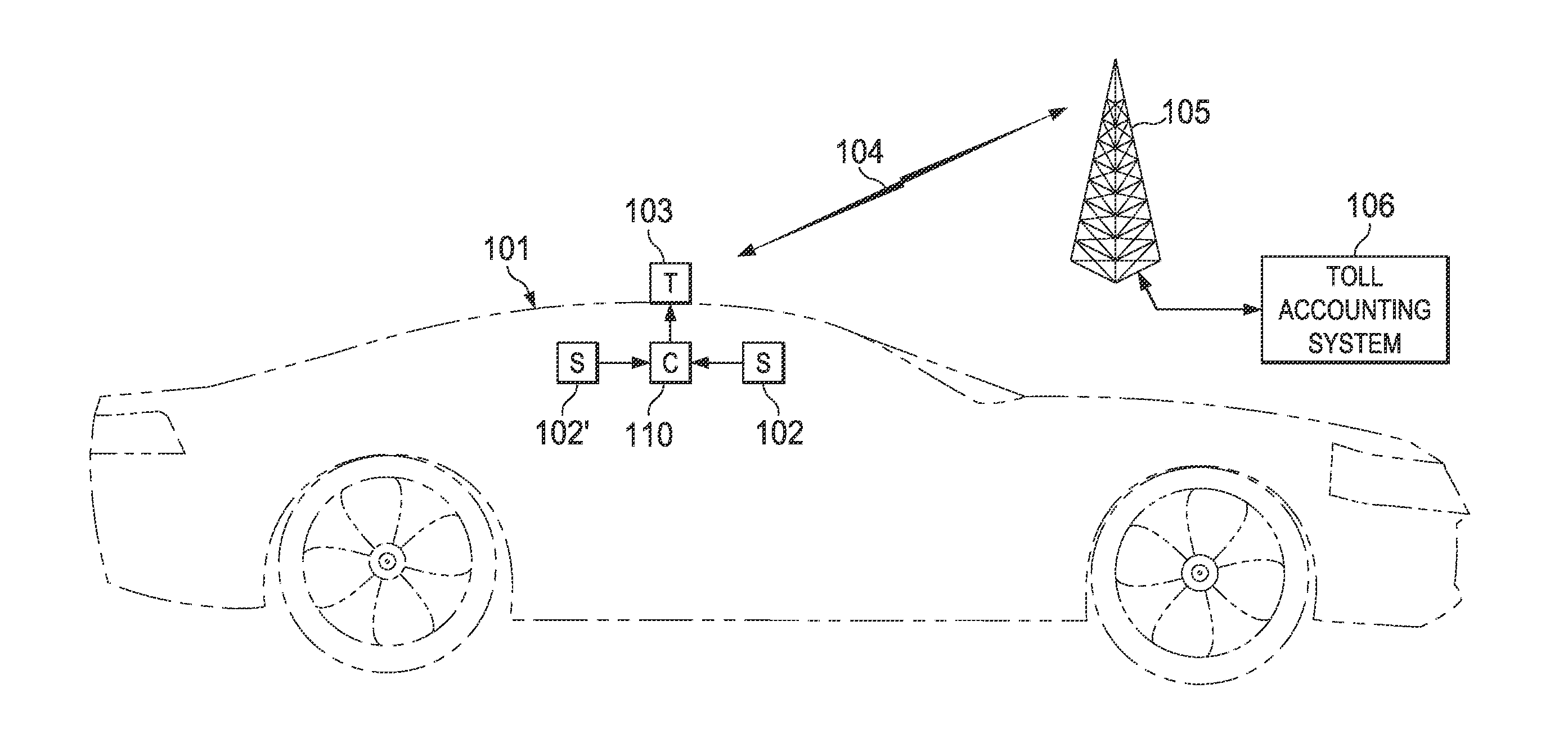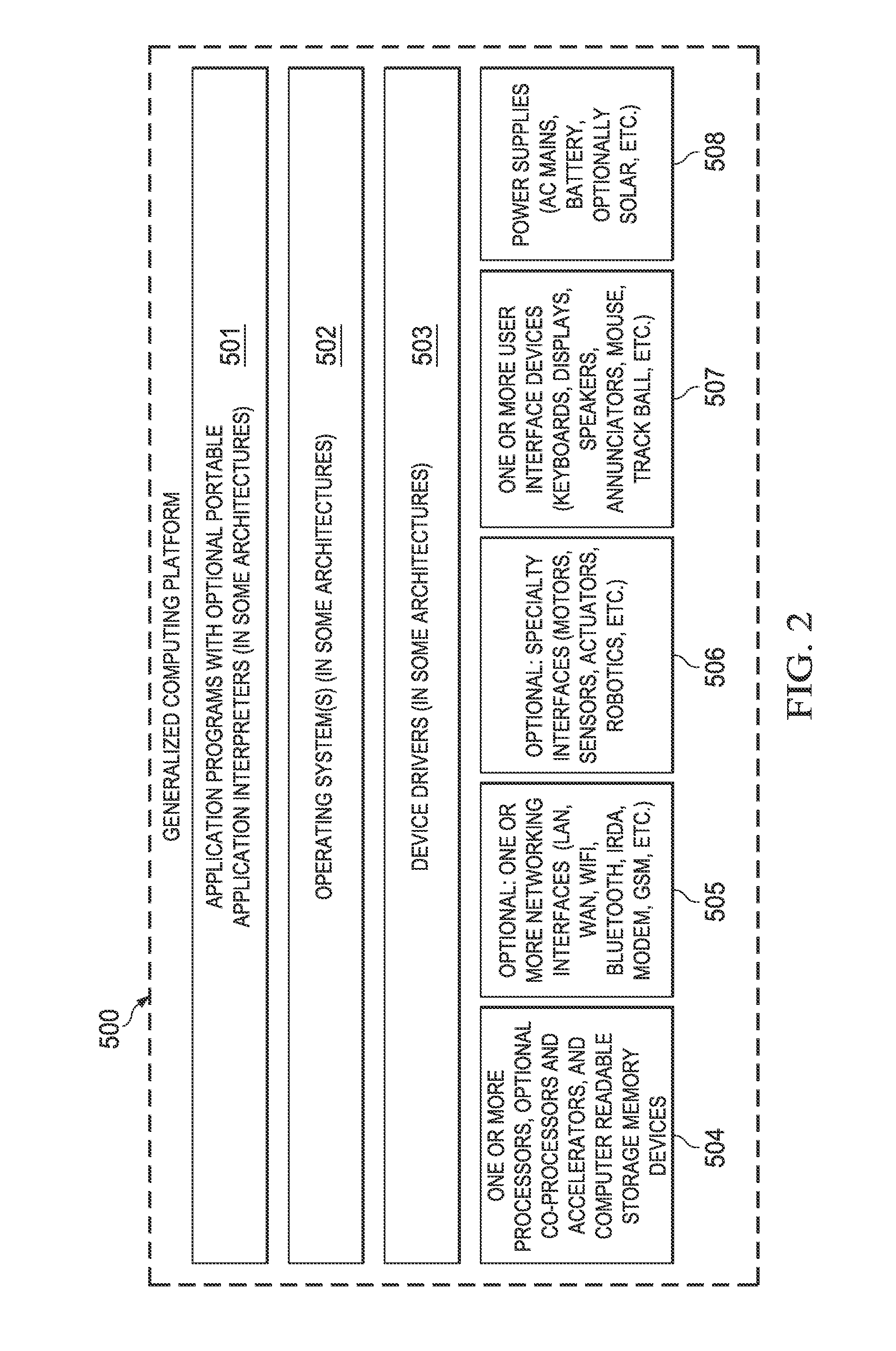Remote sensing of vehicle occupancy
a vehicle occupancy and remote sensing technology, applied in the field of remote sensing of vehicle occupancy, can solve the problem that camera-based systems are not able to easily determine the number of passengers in a vehicle, and achieve the effect of reducing or eliminating manual occupancy verification
- Summary
- Abstract
- Description
- Claims
- Application Information
AI Technical Summary
Benefits of technology
Problems solved by technology
Method used
Image
Examples
example 1
[0033]A system for managing a toll-based roadway, the system comprising:[0034]one or more receiving units positioned above or proximate the roadway; and[0035]a sensing unit positioned within a vehicle traveling on the roadway, the sensing unit configured to sense occupancy data based on the number of passengers within the vehicle;[0036]wherein the occupancy data is communicated to the one or more receiving units.
example 2
[0037]The system of example 1, wherein the sensing unit includes one or more infrared sensors for detecting heat or motion within the vehicle.
example 3
[0038]A method for managing a toll-based roadway, the method comprising:[0039]determining the number of passengers within a vehicle traveling on the roadway, said step of determining being performed from within the vehicle;[0040]communicating data related to said number of passengers to a database; and[0041]charging a toll based on the number of passengers within the vehicle.
PUM
 Login to View More
Login to View More Abstract
Description
Claims
Application Information
 Login to View More
Login to View More - R&D
- Intellectual Property
- Life Sciences
- Materials
- Tech Scout
- Unparalleled Data Quality
- Higher Quality Content
- 60% Fewer Hallucinations
Browse by: Latest US Patents, China's latest patents, Technical Efficacy Thesaurus, Application Domain, Technology Topic, Popular Technical Reports.
© 2025 PatSnap. All rights reserved.Legal|Privacy policy|Modern Slavery Act Transparency Statement|Sitemap|About US| Contact US: help@patsnap.com



